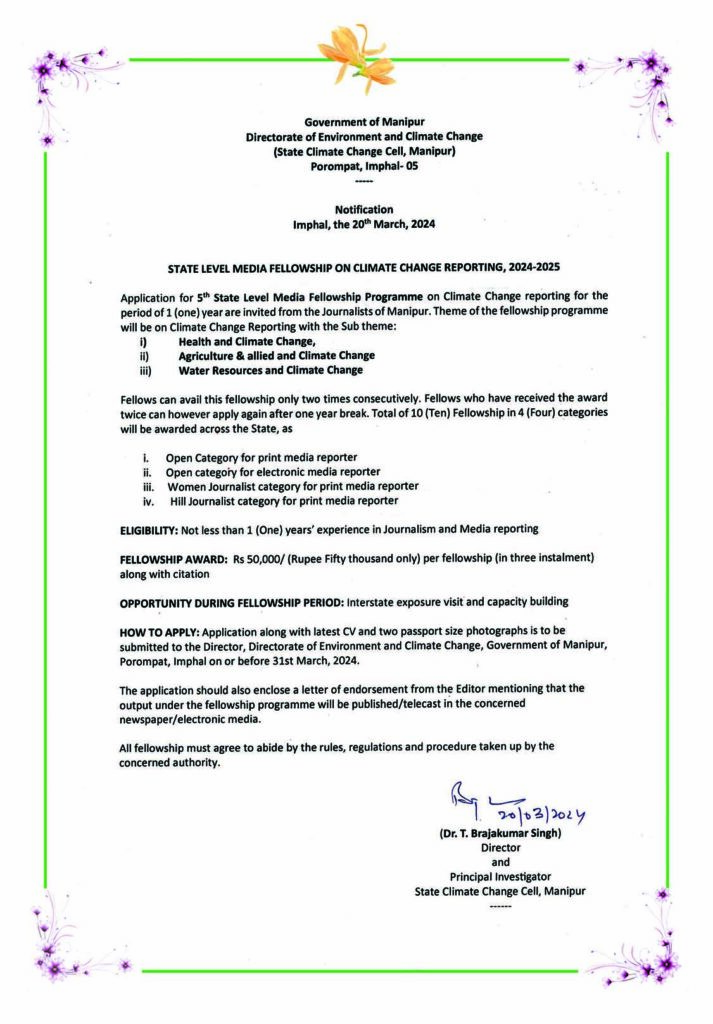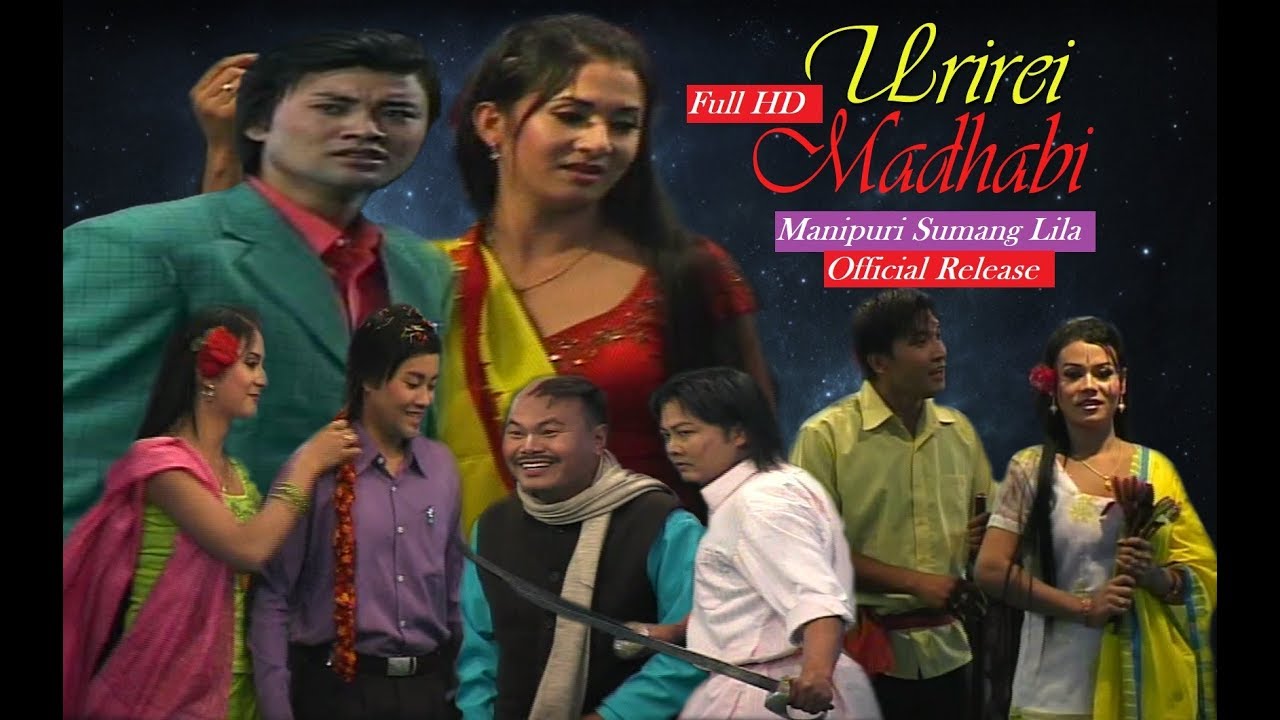From the volume Confluence: Essays on Manipuri Literature and Culture complied and edited by B.S. Rajkumar.
Canchipur: His Birthplace
This place occupies an important place in the history of Manipur. The lovely place has been further made immortal with the colourful imaginary descriptions of this Manipuri pioneering poet, Dr. Lamabam Kamal Singh. Like the Ujjain of Kalidasa, the Lake district of Wordsworth, Wesses of Thomas Hardy, Malgudy of RK Narayan, the poet Kamal also depicted Canchipur in his romantic novel Madhabi and poetry collection Lei Pareng with such unforgettable loving descriptions that his ‘Canchi Garden’, ‘Heibokching; ‘Chandranadi’, ‘The Hillside Champak Flower’ are some such examples that would ever remain indelible in one’s memory! Besides these, his Madhabi of Canchi, Urirei, Biren, Dhiren, Shashi, Bhubon’s Father etc. though being imaginary characters that have been able to impress its unforgetting stiches in the corner of the readers heart throughout the years. Above all of these the place called Canchipur had been an historical site. During the reign of Rajarshi Bhagyachandra in 1779 the world famous Raas dance was created at this place when it was the seat of power as the capital of the kingdom under the King. Canchipur continued to be the palace of the king during the reign of Gambhir Singh Maharaj in 1827. During the reign of King Chandrakirti the palace saw its production of the Kalidaman dance in 1835 under royal patronage. Churachand Maharaj, 1891-1941 also made Canchipur his Summer Capital. (“At present Manipureshwar Shrijut Churachand Maharaj has made Canchipur his second palace.” –Madhabi.) At such a place known as Langthabal Kunj Mayai Leirak afterwards changed to Lamabam Leirak after the passing away of the poet about 8 kilometers from Imphal, the poet was born on 3 March 1900. Langthabal Kunj is a conglomerate of three Leikais or neighbourhoods – Makha Leikai, Mayai Leikai and Awang Leikai. Dr, Kamal’s place is the Mayai Leikai. Langthabal falls within the Imphal West District. The Manipur University is also situated here.
During the pre-second world war period when Dr. Kamal was born this Langthabal palace was filled with ruins. Yet the prestige of Langthabal had not diminished. It still thrived on under the loving care of goddess nature. There are three prestigious tanks in Langthabal – Raas MandaI, Apanbi and Hao Macha (Ningthem Pukhri). These tanks provided a perennial source of water and they are regulated by many to be haunted. When there is scarcity of water in the area, villagers go to fetch water from these tanks. Langthabal is also famous for its Leihao Leiren (Michelia champaka), the flower that provides profusely golden champaka. “Like the parijat of Amaravati/ This flower is widely known/ln the flower garden of Canchipur/ ‘Leihao Leiren, people praise . .. . In the past armed guards/used to guard it at its foot/ blooming flowers and fresh shoots/thy did/lot let go to waste.” (Chingya Leihao in Lei Pareng). Mahakavi Anganghal also describes the beauty of this flower in his poem’ “When the Right side Champak of Langthabal Falls. These grew side by side Right and left almost scraping the sky in the south western direction of Canchipur. Both the Trees are huge – its arc could not be encompassed by a number of men. It is almost impossible to climb up the tree. So people generally use rope ladders for this purpose. The champak flower blooms in two distinct colours-golden and silver or white (Michelia montana). People visited the champaka to see and to gather the flowers. In the old days people from distant places also used to visit this hillock garden on bullock carts. There used to be a shrine of Mahadeva at Heibokching. Devotees paid homage on the occasion of the April New Year, and Holi etc. to the God climbing the hill. The venue of ‘Chingoi Baruni’ mentioned in the novel Madhabi may be regarded to be suggested by the worship of Mahadeva at Heibokching. At present there is a village of tribals at the foothill of the hill. In the past there were chowkidars to look after the security of the Palace. Dr. Kamal frequented the Langthabal Palace in his boyhood. He went there to play with his mates. He was habituated as a child to remain long hours in the shade of trees there engrossed in the scenic beauty of the place. One day he was lying stretched prone looking up ahead murmuring something non stop. His mates asked what he was doing. Dr. Kamal replied –“1 am accounting the mango leaves in the tree. Kamal was always writing down his impressions as a habit since his childhood. Dr. Laishram Kirti remarked at an occasion – “Kamal could be found making pencil sketches sitting alone.” About Kamal’s birthplace Langthabal Kunj his son Brajendra Lamabam writes – “It is an agriculture based village. It is a bit far away from the noises of city, love of peace, distractions and anguished life found in the city. The place rests in peaceful contentment amidst the gifts of nature – the hills, the lakes, the river, green fields and ‘Woods. The place is situated at the adjoining place of city and rural area, People are very innocent and live in peaceful harmony.”
Kamal’s Parents
Kamal’s father’s name is Lamabam Jatra Singh and mother’s name is Yumnam Ningol Leirik Devi of Mayang lmphal. Though one cannot call Jatra’s family to be wealthy they lived on sufficiently enough away from indigence. In other words, one may call their family to be well off according to rural standards. His main profession is to indulge in petty commercial dealings besides being a Lairik Theeba. Agricultural work made up the rest. His main works is sugar cane farming as well as the extraction of molasses. Besides it he used to trade rape seed and sesamum going as far as Kakching, a far off place from his native village. A tin of mollasses used to coast only three annas in those days. Jatra grew sugarcane densely in his home plot. Kamal also used to work at clearing away the sugarcane plants when he came home during his medical days. Leirik, his mother, also used to sell vegetables besides such items as Uchan (splintered pinewood) and sesanum. She would get up early in the morning do sell wares at the Moirangkhom Market (in those days Moirangkhom market used to be quite big enough) and then, she would go to Lilong market in the evening. She was a hard working soul. Sometimes she would go to buy in bulk, Soibum (fermented bamboo shoot), a delicacy, from Kakching. She was a good natured, good looking, hard wlorking Meitei women. Another profession of Jatra is the Lairik Theeba of Meitei. In this persuasion also he became a noted performer. As a reciter of the religious verses he was much in demand not only in his vicinity but also in far off areas. He was invited to perform in as far as Kakching. In fact, the art of Lairik Theeba (the singing of religious verses) was a very much popular art of the times. People were in the habit of whiling away the evenings in summer and again in the month of October listening to recital of the religious verses and the Manipuri translation of the same in melodious voice. Other performances popular in those days included Gouraleela etc. Jatra’s partner in the performance of Lairik theeba was called Lala Sharma who was the lairik haiba that is the Manipuri translator. Thus, many disciples used to visit the Lamabam house to get the knowledge of lairik theeba from the teacher Lamabam Jatra. Hence the family’s main tradition was centered on discussions on Vaishnava religion and its tenets. The art of lairik theeba became the predominant form of profession as well as livehood for Kamal’s father. Jatra used to profess the art of Maiba on the side also. To put it briefly this family became one of the much significant families in the village, and also a family people used to show much deference. There was a time when the family was counted to be powerful. Jatra as a teacher also possessed an attractive personality. He was not large built, had a half fair complexion. The Lamabam’s are dark coloured in majority. If one happens to be fair complexioned the credit naturally goes to the father. The first born son of Jatra, Kamal Singh thus grew up in a orthodox Meitei Vaishanava family. Since childhood he was associated with Vaishanavism, Hindu puranas, legends and religious traditions. He had in fact grown up in the midst of the practice of lairik haiba and theeba, memorising them as well as the assembly of such people, without a teacher he came an adept in verse singing. So, if his father was indisposed and there was none to fill up his place, he met with the exegesis by taking his father’s place as the lairik theeba. People who heard him thus were filled with wonder to see the boy’s admirable performance. Because the boy was able to render his performance not in any way lesser than his father’s. Another reason for his success in this art remains with the sweetness of his voice. He possessed a melodious voice, could sing well and gave his heart to music very much. His son Brojendra says in this regard. “He had quite a sweet voice. He could play well on the harmonium and sitar. He joined singers occasionally. When he happened to be alone in the house he was given to humming a tune or two at least. Jatra had ten children. They are – 1. Kamal Singh, 2. Thadoi Devi, 3. Amusana Devi, 4. Madhab Singh, 5. Kuber Singh, 6. Tathot Devi, 7. Leirenjao Singh, 8. Bhanu Devi, 9 Chandrahas Singh and 10. Jamuna (Ibetombi) Devi, And Dr. Kamal was the eldest in the siblings. Yet he had an elder brother called Gouro (Gourahari) Singh, a cousin brother, son of his uncle who was about eight years older to him. They had a very close relationship. It was Gourahari who saw off his younger brother to school when the child Kamal went on nagging against school going. It was him who wiped away his tears. It was his cousin brother Gouro who tried his best to calm down the protesting Kamal by offering him sweet meats. After Dr. Kamal’s death when there was a search for Devajani in MS it was Gouro who brought it out from the safety of careful preservation. It proved to be a rare find given the circumstance. The book was published in 1984. Today Gouro has also left the world perhaps he might have joined Dr. Kamal in heaven.
To be continued next week











1 thought on “The Poet Lamabam Kamal: Life And Times – Part 1”
Sir please say the date of his death
Comments are closed.